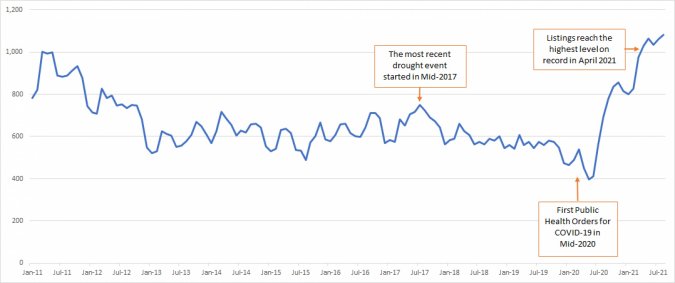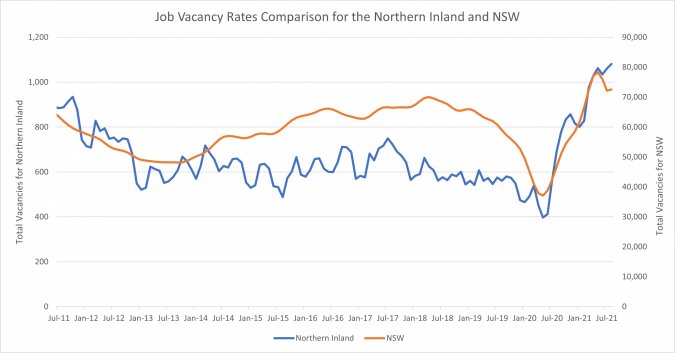-
Featured Items
-
Featured Resources
 Funding & Grants
Don't miss out on funding opportunities. Stay informed with our up to date online listings and email notifications.
Read More
Funding & Grants
Don't miss out on funding opportunities. Stay informed with our up to date online listings and email notifications.
Read More
 Skilled Migration
Our services help both applicants and employers, to learn more, develop plans, submit applications, and settle in.
Read More
Skilled Migration
Our services help both applicants and employers, to learn more, develop plans, submit applications, and settle in.
Read More
 Research and Analysis
Good research and analysis makes the case. How can our resources and services help your project or application?
Read More
Research and Analysis
Good research and analysis makes the case. How can our resources and services help your project or application?
Read More
 Information & Data Resources
With resources like REMPLAN, Regional Knowledge Base, and decades of data, discover how we can help your project.
Read More
Information & Data Resources
With resources like REMPLAN, Regional Knowledge Base, and decades of data, discover how we can help your project.
Read More
-
Stay InformedSubscribe to one or more of our regular email subscriptions, to be kept up to date on news and funding opportunities for the region
-
-
Our Region
- Our Region
- Regional Plan
- Regional Data
- Current Regional Issues
- Population Migration Analysis for 2016-21
- Job Vacancies Continue at All-Time High
- National Debt - What it Means for Our Economy?
- The True Value of Home Solar
- The Economic Impacts of Local Government Amalgamations
- State of the Regions Report 2014-15
- Antifragility - A different take on regional economic development
- Biohubs - Collaborative Waste Management
- Attracting New Residents
- Socio-Economic Impacts of the Murray Darling Basin Plan
- Murray Darling Basin Water Recovery
- Growing Businesses
- The Northern Inland Economy
- Geographical Overview
- Major Industry Sections
- Our Services
- Grants and Funding
-
Skilled Migration
- Skilled Migration
- Skilled Employer Sponsored Regional Visa
- Skilled Work Regional Visa (subclass 491)
- Temporary Seasonal Workers
- Designated Area Migration Agreement (DAMA)
- Helpful Information for Visa Holders
- Information for Employers
- Case Studies
- Payment Details
- Advice & Further Information
- Contact Details
- News & Events
-
Our Projects
- Our Projects
- Current Projects
- Skilled Migration
- Wool Works - Wool Training Schools
- Metal Works - Welding and Fabrication Schools
- Come On Inland
- Stories of Resilience
- Alt Brothers Beekeeping - Glen Innes
- Carelle's Toy Store - Glen Innes
- Greenhill Orchards - Arding
- Gwydir Meats - Warialda
- Kaputar Motors - Narrabri
- Moonbi General Store - Moonbi
- Sandstock - Tingha
- Sherelle Fashions - Tenterfield
- Sleepy Merino - Inverell
- Tenterfield Chamber of Toursim, Industry and Business - Tenterfeild
- The Welders Dog - Armidale
- Walcha Veterinary Supplies - Walcha
- AGCAP - Agribusiness Careers & Professions
- Northern Inland Regional Investment Profile
- Past Projects
- Digital Economy Strategy
- Business Growth Project
- Go Digital
- How to Start an Online Business
- Create Your Website Using Squarespace
- How to Edit Your Squarespace Site - Part 1
- How to Edit Your Squarespace Site Part 2
- Add a Shop to Your Squarespace Site
- Start a Blog and Find out What Customers are Searching
- 14 Tips For a Better Blog Post
- Which Social Media Platforms are Best for Your Business
- How to Use Facebook Effectively For Your Business – Part 1
- How to Use Facebook Effectively For Your Business – Part 2
- Instagram Tips for Business
- Catching Up, More Instagram & Dealing with Haters
- Getting Started with Twitter for Business
- Social Media Scheduling Tools
- How to Start an Etsy Shop – Part 1 – Research
- How to Start an Etsy Shop – Part 2 – Signup
- Online Security for Your Business
- Product Photography and Website Images: Your Guide
- 5 Tips to Improve your Productivity in your Business
- Best Online Business Resources
- How to Improve Your Communication Skills and Win More Clients
- NBN Coordinator
- Putting Power Back in the Regions
- Road Freight Study
- Town Audit Benchmarks
- Food and Wine
- Youth Survey
- Digital TV Switchover Assistance
- Northern Inland Transport Guide
- Live.Train.Work
- Northern Inland Innovation Awards
- Northern Inland Innovation Awards - 2017
- Northern Inland Innovation Awards - 2016
- Northern Inland Innovation Awards - 2015
- Northern Inland Innovation Awards - 2014
- Northern Inland Innovation Awards - 2013
- Northern Inland Innovation Awards - 2012
- Norther Inland Innovation Awards - 2011
- Prime Super Northern Inland Innovation Awards - 2010
- Prime Super Northern Inland Innovation Awards - 2009
- Northern Inland Innovation Awards - 2007
- Northern Lights Project
- NBN Smart Home
- Murray Darling Basin
- Moree Plains Business Workshops
- Namoi Investment Prospectus
- Industrial Land
- Bioenergy and Local Electricity Retailing
- Northern Inland Business Energy Assessment
- Skills for the Future
- Impacts of COVID-19 on Businesses
- Past Projects of NIRDB
- Aboriginal Employment and Enterprise in the Gunnedah Region
- Art as an Industry
- Aviation Survey
- Farm Forestry - Northern Inland Forestry Investment Group
- New England North West Film Strategy
- Northern Inland Excellence in Business Awards
- Food and Wine 2003 - 2008
- Prime Super Northern Inland Innovation Awards 2009
- Regional Business Networking Program
- Regional Leadership Course 2008
- Viticulture Strategy 2002-2003
- About Us
- Contact Us
- Other Resources
- Privacy and Legal
- Search
- Our RegionOur Region
- Current Regional IssuesCurrent Regional Issues
- Job Vacancies Continue at All-Time HighJob Vacancies Continue…
Job Vacancies Continue at All-Time High
The number of job vacancies advertised online for the Northern Inland reached an all-time high in April 2021. According to the Australian Government’s Internet Vacancy Index, these record highs are continuing, even during the recent public health orders in the region. The level of job vacancies in the region are now double pre-covid levels in January 2021 and are 40% higher than pre-drought levels in July 2017. The data is even more stark when considering ‘grey’ jobs that are not advertised online or at all.
This upward trend and the impacts of recent events can be seen by charting the number of vacancies for the region, as shown in Figure 1. During the drought, the number of listed vacancies dropped steadily from when the drought started in mid-2017. With the increased rainfall in early 2020, the number of vacancies began to rise. Then in the middle of 2020, the sudden effect of the first public health orders for COVID-19 saw vacancy levels drop to an all-time low, with only 400 jobs listed online.
Figure 1
Note: Data Source: Vacancy Report – September 2021, Australian Government
With the reduction of public health orders in late 2020, combined with continuing recovery from the drought, the number of job listings increased quickly, reaching pre-drought levels by September 2020. Since then, it has continued to grow to record levels, reaching an all-time high in April 2021, with over 1,000 job vacancies. Although listings decreased in line with the latest public health orders, levels have remained high and reached the highest ever levels in August.
The total number of vacancies in New South Wales also shows a similar trend, as illustrated in Figure 2. However, the impact of the drought is not as prolonged, with the state total not dropping until almost two years after the Northern Inland.
Figure 2
Note: Data Source: Vacancy Report – September 2021, Australian Government
For some, an all-time high for job vacancies is good news. It provides job seekers additional choices, and it is a positive factor for attracting new residents to our communities. The top 5 categories of advertised vacancies for our region in September 2021 were Professionals (Health, Social, Welfare, Business, Engineers), Labourers, Technicians and Trades Workers (Automotive/Engineering, Food Trades, Construction), Clerical and Administrative workers and Community and Personal Service Workers (Carers, Hospitality). The lack of work in regional areas has been a long-held misconception, and objective data such as this can help dispel these myths. However, these large vacancy numbers mean something different for employers. Instead of being a good thing, it signifies an ongoing challenge for our region.
Our region’s employers have long been voicing their concerns about the inability to source skilled and unskilled workers. Being unable to fill vacant positions impacts their ability to grow and sometimes even survive, greatly restricting the capacity of our region’s economy. The increased number of job choices for prospective employees creates even greater competition for employers to attract workers from the already limited pool of workers. Many employers have been seeking staff for so long they have given up on advertising the position. Jobs such as these and others not advertised online are not included in the job vacancy data, as it relies on the number of jobs advertised online. Therefore, the number of vacancies in our region is even higher than these numbers suggest.
Job vacancy rates at these record highs indicate the pressing need to develop initiatives to address them. Short- and long-term programs will need to be developed utilising a range of measures, including re-skilling and up-skilling current residents, availability of training courses, School-based training, attracting new residents, and appropriate Skilled Migration programs. Further barriers including housing shortages also need to be addressed. How this is done and ensuring it aligns with the needs of employers and communities in the region will be critical for the future development of our regional economy.
Related Pages
- Current Regional Issues
- Population Migration Analysis for 2016-21
- Job Vacancies Continue at All-Time High
- National Debt - What it Means for Our Economy?
- The True Value of Home Solar
- The Economic Impacts of Local Government Amalgamations
- State of the Regions Report 2014-15
- Antifragility - A different take on regional economic development
- Biohubs - Collaborative Waste Management
- Attracting New Residents
- Socio-Economic Impacts of the Murray Darling Basin Plan
- Murray Darling Basin Water Recovery
- Growing Businesses
- The Northern Inland Economy







 Latest News
Latest News


